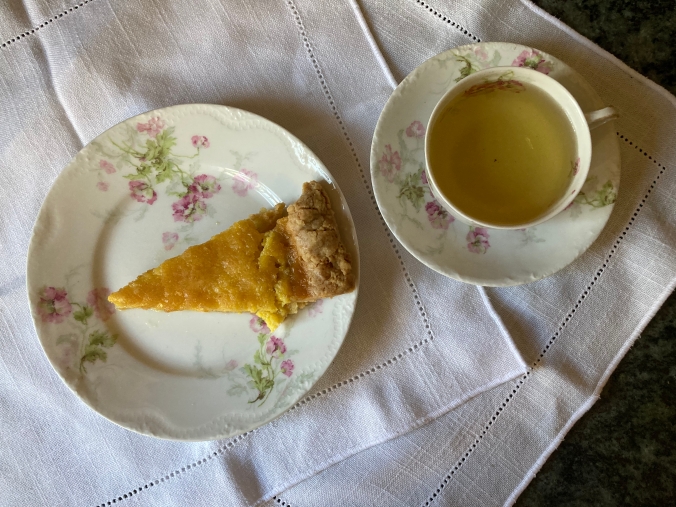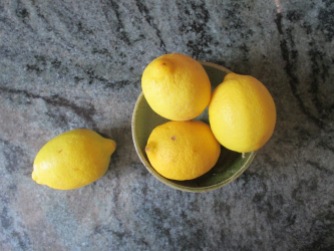Lately, I’ve been thinking a lot about what it means to share food experiences at a distance. When we can’t gather together to eat, how can we connect around food for nourishment and joy, to learn and to build sustainable communities? I’ve recently listened to the Gastropod podcast episode “Shared Plates” and eagerly followed posts from Samin Nosrat‘s Big Lasagna virtual dinner party. I’ve been thinking about who is, and is not, invited to the table and supported organizations in my community that are tackling issues of food insecurity and inequality in our food system. There are so many ways to connect, even if many of them are now online.
Today I’m inviting you to a virtual baking competition: The Great Rare Books Bake Off, a friendly contest between the sister libraries of Penn State University and Monash University. There are eight intriguing recipes to try out; four from the collection of each library. An engraved pie pan trophy will be awarded to the library that receives the most social media posts featuring photos of your baked goods tagged with its hashtag: #BakePennState or #BakeMonash. The competition runs July 20-24, 2020 so you have lots of time to read the recipes, shop for ingredients, and get baking. All the details are on the site linked above.
This recipe for Lemon Tart is the oldest one in the competition. As the Penn State lead baker, I encourage you, my Cooking in the Archives readers, to give this one a try and cast your vote in #TheGreatRareBooksBakeOff

Description: slice of lemon tart and cup of tea
The Recipe
This is my first time working with the Browne manuscript: It’s a new acquisition at Penn State Libraries! I haven’t seen it in person yet, but my colleagues have generously sent me lots of reference photos. It’s in the queue to be digitized and I cannot wait to research it alongside my students.
Here is the information that my Penn State Libraries colleagues wrote up for our Bake Off site:
The Lemon Tart recipe comes from a handwritten cookbook probably compiled in Camberwell, England, between 1770 and 1846. It consists of two sections: the first section is all written in the same hand between 1770 and 1772. These recipes include transcriptions from printed sources (including Hannah Glasse’s The Art of Cookery Made Plain and Easy (1747)) and unpublished recipes, all from British cuisine. The second section appears to have been written in the early- or mid-nineteenth century and presents more British recipes in various hands. An inscription reads “Browne, 1827, Camberwell, Surr[e]y.”
I decided to update recipes for both “a crust for Tarts” and “To Make a Lemon Tart” from the Browne manuscript for the Rare Books Bake Off challenge. Neither recipe has been copied from Hannah Glasse’s magisterial cookbook.

a Crust for Tarts (p. 37 fol. 19r)
Take a quart of the finest flower a quarter
of a pint of Cream – a quarter and half quarter
of butter – the yolks of two Eggs – a handfull
of sugar Make it into a past – and role it out thin

To Make a Lemon Tart (p. 61 fol. 31r)
Take three Clear Lemons andd grate of the
outside rind – take the yolks of 12 Eggs and
six whits beat them very well – squeese in
the Lemons – then put in three quarters of a pound
of fine suger powdered – and three quarters
of a pound of fresh butter melted stir all well
together – put a sheet of past a the Bottom
and sift suger on the top – put it in a brisk
oven three quarters of an hour will bake it
Updated Recipe
Makes one 10-inch tart that can be baked in a pie dish or a fluted tart pan.
Crust
*Feel free to substitute a store-bought pie crust here or your favorite pastry recipe. If you use a store-bought graham cracker crust (or other pre-baked crust), you can skip the blind baking step.
2 cups/350g flour, additional flour for rolling out the pastry
1 Tablespoon sugar
6 Tablespoons/85g butter
1 egg yolk
1/4 cup – 1/2 cup heavy cream
Preheat oven to 425°F/218°C
Stir together flour and sugar in a large bowl.
Cut butter into small cubes.
Rub butter into the flour and sugar until the mixture is grainy.
Add the egg yolk and 1/4 cup of heavy cream and stir to form a soft pastry. Continue to add heavy cream a tablespoon at a time until all the flour is integrated into the pastry. (I ended up using a whole 1/2 cup in the end.)
Grease a pie or tart dish with butter or baking spray.
Roll out the pastry on a floured surface. Arrange pastry in baking dish.
To blind bake the crust, cover the pastry with foil and fill the dish with baking beans or another weight.
Bake at 425°F/218°C for 12 minutes. Reduce the temperature to 350°F/180°C for 10 minutes. The crust should be golden and set, but not as brown as when a pie is completely finished baking.
Filling
3 whole eggs
3 egg yolks
Zest and juice of 1 1/2 lemons
3/4 cup/175g sugar, plus 1 tablespoon to sprinkle on top of the pie
3/4 cup/175g butter, melted
While the crust is baking, prepare the filling.
Separate the egg yolks, melt the butter, zest and then juice the lemons.
In a large bowl, whisk together the eggs, lemon zest, and lemon juice. Stir in the sugar and then the melted butter and mix well.
Reduce oven temperature to 325°F/163°C.
Place the pie dish containing the baked crust on a baking sheet. Pour the filling into the crust and scrape any sugar from the bottom of the mixing bowl into the dish.
Sprinkle the top of the lemon custard with sugar.
Bake for 45 minutes until the sugar on the top crisps and browns and the lemon custard is set, but still jiggly.
Cool on a rack for 20 minutes before serving.
The Results
This is a delightfully lemony pie with a flavorful crust. The sugar topping gives each bite a nice crunch, but the pie is only mildly sweet overall. Sharp lemon balances the rich custard and crust.
Warm from baking and cold from the fridge, this pie is going fast in my house. I wish I could share it with friends and I’m glad that I can share the recipe here with you. Let the bake off begin!







Why did you increase the amount of butter in the filling in the modern version? The original text calls for equal measures by weight of butter and sugar, yet you increased the butter in your modernization. I’m also curious if “fresh butter” at the time included salt (unsalted butter is, by and large, a modern thing, as salt preserves the butter). Your modern recipe includes no salt, which as a baker I find odd if you’re using unsalted butter.
Thank you for pointing this out!
I halved the original in my updated version because a 6-egg tart is more approachable than a 12-egg tart. I did halve the butter in the recipe that I tested, but when I was typing it up I mistranscribed my notes. I’ve corrected the instructions to reflect equal amounts of butter and sugar.
I think fresh butter here means unsalted butter that is freshly made. Or could just be a standard trope of recipes wherein the writer implores the cook to use fresh ingredients. When I test historical recipes, I tend to use unsalted butter so I have more control over the seasoning of the dish. I have no idea how much salt would have been used in eighteenth-century butter making and how that would have affected flavor. I debated adding a pinch of salt to my pastry and a 1/2 teaspoon to the custard, but left it out. If you make the recipe and add salt, please let me know what you think of the results!
Pingback: To Make a Lemon Tart — Cooking in the Archives | homethoughtsfromabroad626
Pingback: Merkwaardig (week 29) | www.weyerman.nl
Pingback: A Potatoe Pudding | Cooking in the Archives
Pingback: A Potatoe Pudding - Cooking
Pingback: How to make Donuts | Cooking in the Archives
Pingback: Christian Barclay’s Almond Jumballs | Cooking in the Archives